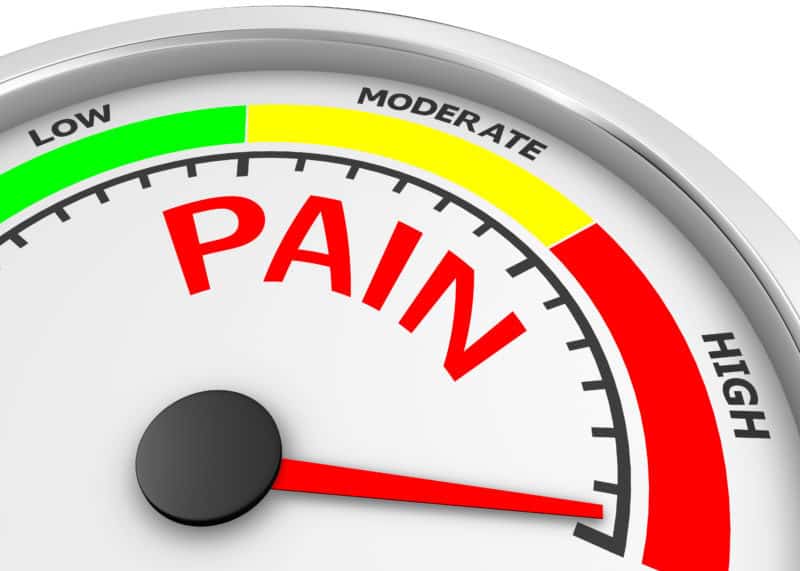

According to the National Institute of Health, over 50 million Americans suffer from chronic pain and pain treatment has become a $635 billion industry.
These are staggering numbers.
As a country, we overprescribe opioids, which are very addictive, and now we are paying the price. The opioid crisis was recently declared a health emergency, and rightfully so.
It’s well known that Americans consume 90 percent of the world’s opioid supply, but what does that mean exactly? Are Americans in more pain? Do Americans have a low tolerance for pain?
The answer lies somewhere in the middle.
Americans are in more pain due to increased chronic inflammation and disease but also, we have a pain perception problem. What many seem to forget, is that pain is a process of perception within the body.
For us to effectively manage pain in our lives, we need to understand how it works. Once we understand the mechanisms behind pain, all efforts to manage it will be much more effective.
Many don’t realize there are so many ways you can reduce the pain in your life without taking prescription drugs. It’s quite possible for most people to live a relatively pain-free life without relying on addictive opioids.
To treat pain, we must understand pain
Pain is a signal your body creates naturally in response to stimuli. This stimuli could be changes in pressure, temperature or chemical balance. These changes awaken your immune system which floods the affected area with inflammatory agents to alert you and your brain. Your brain detects this change in stimuli and then directs your attention to the affected area immediately. The brain creates the feelings you associate with the word ‘pain’ to try and get you to change your behavior.
Pretty clever, huh?
For example, when you reach out and almost touch a flame – what stops you even before you reach it? Pain. Pain is your brain telling you to stop what you’re doing before you hurt yourself.
Pain is a powerful sensation that can affect anywhere in the body. If you’re in enough pain it can limit your ability to function normally and impact your quality of life.
Here’s the tricky part of pain.
Sometimes when you’re in pain and it’s causing you to limit your movements, this seemingly preventative measure is actually causing you more harm than good. Your pain mechanisms aren’t that smart. They sense changes in your body and send incessant signals to your brain, even when it’s not helping.
All too often I’ve seen patients who are in pain try and avoid certain movements to protect themselves from pain. This lack of movement has a cascading effect, leading to additional medical problem affecting other areas of our health. Pain then becomes a vicious cycle.
This potential pain cycle is why it’s so important to address pain early on and stop it in its tracks. If you let pain progress uninhibited, it can have a run-away effect. This is the same reason poor nutrient diets that cause inflammation can contribute to chronic pain.
Effective pain management
Any good pain management strategy involves addressing the issue from numerous angles with the intention of achieving long-term results. It helps to approach pain management with a holistic mindset instead of looking for a magic pill. While opioids may be necessary for acute pain, they are never a long-term solution.
The essential factors that must be addressed for effective pain management include relieving acute pain, inflammation, and restoring function. Here’s how I treat my patients to achieve lifelong pain relief.
- Anti-inflammatory diet – Your pain management plan should include a strategy that reduces inflammation from within. Anti-inflammatory diets eliminate sugar, gluten, and other food allergens known to wreak havoc on the immune system. I recommend a 30-day Paleo reset for my patients with persistent pain, and ideally a Paleo AIP reset, which takes out additional potential food triggers such as eggs, nuts, and the nightshade family of vegetables (tomatoes, potatoes, eggplant, bell peppers, etc…).
- Sleep – Getting enough good quality sleep is crucial in pain management. This can be a challenge, as often pain prevents you from getting enough good quality sleep. Sticking to a regular bedtime and waking times help regulate your circadian rhythms, and setting yourself up for a good night’s sleep by avoiding screens and bright lights for 1-2 hours before bed go a long way!
- Magnesium – Magnesium helps relax muscles and is great for pain management. I recommend adding magnesium malate to your supplements if you struggle with chronic pain. Also taking baths with epsom salts can be very helpful as well, as epsom salts contain high amounts of magnesium that you will absorb through your skin.
- Movement therapy and Body Work – While moving might be the last thing you feel like doing when you’re in pain, it is critical to any pain management program. Just because you’re in pain doesn’t mean you should stop moving. Getting regular body work done such as massage, stretch therapy, cupping and acupuncture can significantly reduce your pain. And see a physical therapist that can help you find the right exercises for your specific issues and help you strengthen your body to fight pain effectively.
- Topical analgesics – Topical analgesics such as Biofreeze and Tiger Balm can be actually very effective at reducing pain by flooding pain receptors with menthol. If your pain is acute and in an area where you can use topical analgesics, try adding these to your pain management protocol.
- CBD oil – One of the most impressive benefits of CBD oil is its ability to relieve pain naturally. A 2012 study found that CBD oil significantly reduced inflammation and pain in patients. In fact, many patients prefer CBD oil over opioids. It’s a common misconception that CBD oil is hallucinogenic like its THC counterpart, but that’s simply not true. You can learn more about CBD oil here.
- Testing to find the root cause – I recommend testing for nutrient deficiencies, underlying infections, imbalances in hormones, and toxin exposure if you suffer from chronic pain. Work closely with your functional medicine doctor so you can identify root causes and contributors.
Managing pain requires a commitment to lifestyle changes – but when done right, enjoying a pain-free existence is possible. It makes me so happy to see patients who were once struggling with daily tasks get their lives back. It’s why I love my job so much!
If you suffer from chronic pain and want to know more about how functional medicine can help you, fill out a contact us to get started on your healing journey.
Resources:
http://americanpainsociety.org/education/overview
https://www.sciencedaily.com/releases/2012/09/120911091100.htm
Share:
Related Posts

What Is Sleep Apnea? Symptoms, Risks, and Treatment Options
Sleep apnea occurs when breathing repeatedly stops and starts throughout the night. Learn the symptoms, risks, and sleep apnea treatment options.

Estrogen Metabolism: How It Works, Why It Matters, and Supplements for Healthy Estrogen Metabolism
Estrogen metabolism is vital to estrogen regulation. Learn how it works and how the DUTCH test can provide insight into hormonal imbalance.

The Paleo Diet Versus the Autoimmune Paleo Diet: Differences and Benefits
Learn the difference between the paleo and the autoimmune paleo diet, including food lists, what foods to avoid, and all the health benefits!

A Complete View of Multiple Sclerosis: Symptoms, Diagnosis, and Functional Medicine Treatment Options
Get a complete view of multiple sclerosis, including common symptoms and treatment options, including nutrition and supplementation.
